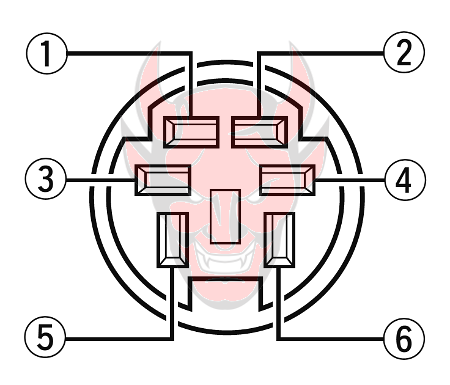Radio manuals tend to be quite useful for learning the operation of our radio gear. One topic where this appears to not be the case is in descriptions of the signals one finds in the typical 2m/440 transceiver miniDIN data jack.
Evidence of MiniDIN confusion
This came to light in a Zed Thread where I explained our success of using the “9600” pin and settings for both 1200 and 9600 operation.
A Zed patron asks a reasonable question concerning the Yaesu FT-8800…
So… what if I were to wire the cable such that the TNC listens on the 9600 bps pin for 1200 bps signals?
My response…
It will likely work especially if you have a DSP based TNC or softTNC like Direwolf that can examine the signal at various combinations of amplitudes of the mark and space tones. For the Virginia Packet Network we are doing exactly this using the SCS Tracker TNC and an Icom IC-880. We have the TNC transmit signal wired to the DATA IN pin on the miniDIN connector and have the, so called, data speed set to 9600 so this signal connects directly to the modulator and skips emphasis. We have the DATA OUT pin (called 9600 on some radios) from the radio going to the TNC audio input resulting in a voltage directly from the demodulator without de-emphasis. The result is a system that can switch between 1200 and 9600 simply by changing one parameter in the TNC setup. No changes to the radio are required.
The radio settings “1200” and “9600” are a bit of a misnomer as they are really changing analog behavior with little to do with actual data speeds. 1200 really means the signal goes through, among other things, emphasis on transmit and de-emphasis on receive. 9600 skips that and, more or less, directly connects to the modulator/demodulator. The unfortunate reality with amateur radio settings and manuals with regard to that packet miniDIN connector is the actual changing parameters are abstracted away and placed behind “convenient” labeling. Adding to the confusion the IC-880 manual specifically states “DATA OUT is for 9600 bps only. This pin cannot be used for 1200 bps operation.” We’ve proven that incorrect.
All this in mind here are some things to know:
- If you send a 1200 signal direct to the modulator (radio in 9600 mode), you are bypassing the emphasis circuits. To be most like what a receiver is expecting, you have to apply the emphasis in the TNC. SCS was kind enough to add that feature upon our request and it works great.
- If you receive a 1200 signal directly from the demodulator, (from the ‘DATA OUT’ or ‘9600’ pin), you won’t benefit from the de-emphasis leveling out the amplitudes of the two tones. Hence, the software needs to expect that… Direwolf and the SCS handle this well. Straight hardware modem chips might have problems.
- If you operate your TNC in 9600 mode, you are good to go as you already have the proper connections.
It’s worth trying. Good luck.
I was misled as well
When first preparing the VAPN 2m prototype, I was as baffled as some of the posters. Only after some careful examination did I reach the conclusion the various references to any data speed were merely controls of the analog behavior where data speed is the “typical” use, not necessarily the only use of a particular analog path. One DireWolf document highlights the issue…
Most modern VHF/UHF mobile transceivers have a round 6 pin “data” connector. Remarkably the connector type and pin-out is standardized across the major manufacturers. “Data” is not a very good name because it is audio, not digital data. “External modem” would have been a much better name. This bypasses the normal audio stages and provides wider audio bandwidth suitable for use with modems for transmitting digital data.
Emphasis added. I agree “External modem” makes more sense, but the larger problem is the data-speed references in the documentation requiring the following translations.
Translating the digital jargon to analog behavior
Where 1200 bps settings really mean “the regular voice channel” we have the following points:
- Audio bandwidth: 300-3000 Hz;
- Classic AFSK mode: 1200 bps;
- Other possible modes: 300 AFSK, 2400 PSK, 4800 PSK;
- Audio is emphasized before transmission;
- Audio is de-emphasized after reception.
Where 9600 bps means direct to modulator/demodulator we have these points:
- Bandwidth: near zero Hz to whatever the transceiver and band plan allows;
- Classic G3RUH 9600 and 19,200 bps modes;
- Audio is not emphasized before transmission;
- Audio is not de-emphasized after reception.
Conclusion
Knowing the above relationships of radio manual data jargon to analog behavior, the operator can make logical choices during system design and roll out. It’s a shame this needless extra learning step exists. The Zed Thread reveals the resulting confusion. Radio manufacturers aren’t doing anyone any favors with the deceptive labeling in their documentation.

Photo: Licensed from Colourbox.com